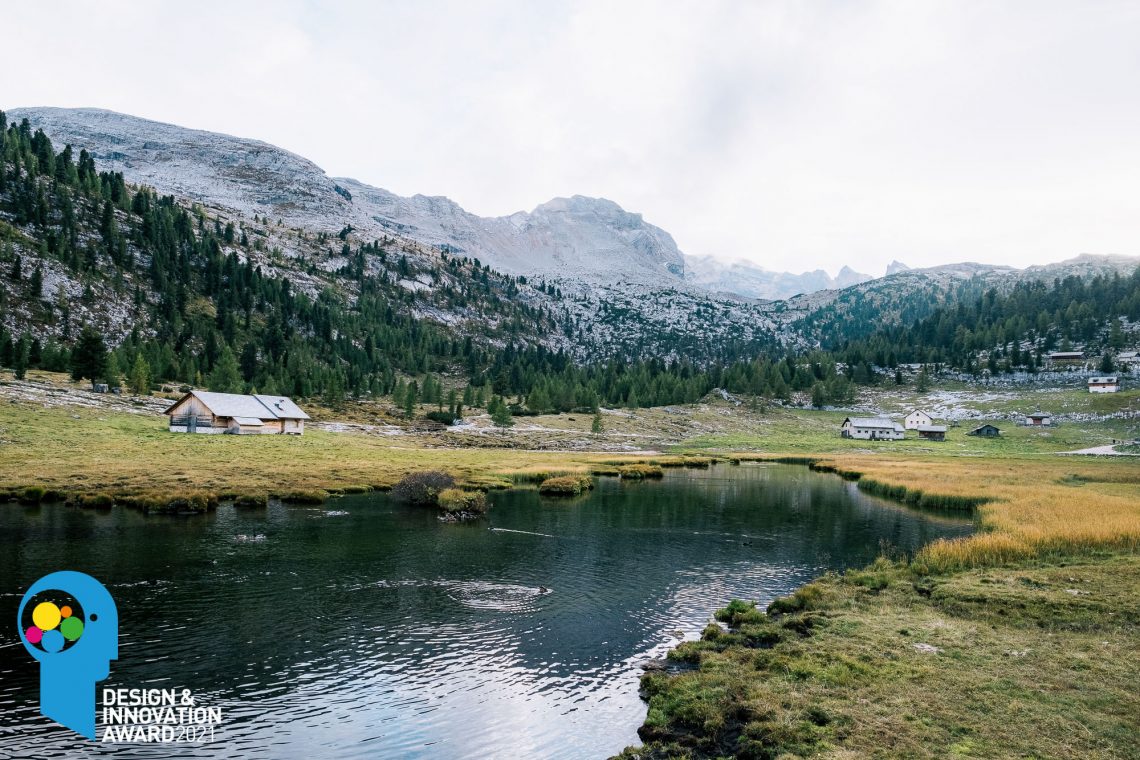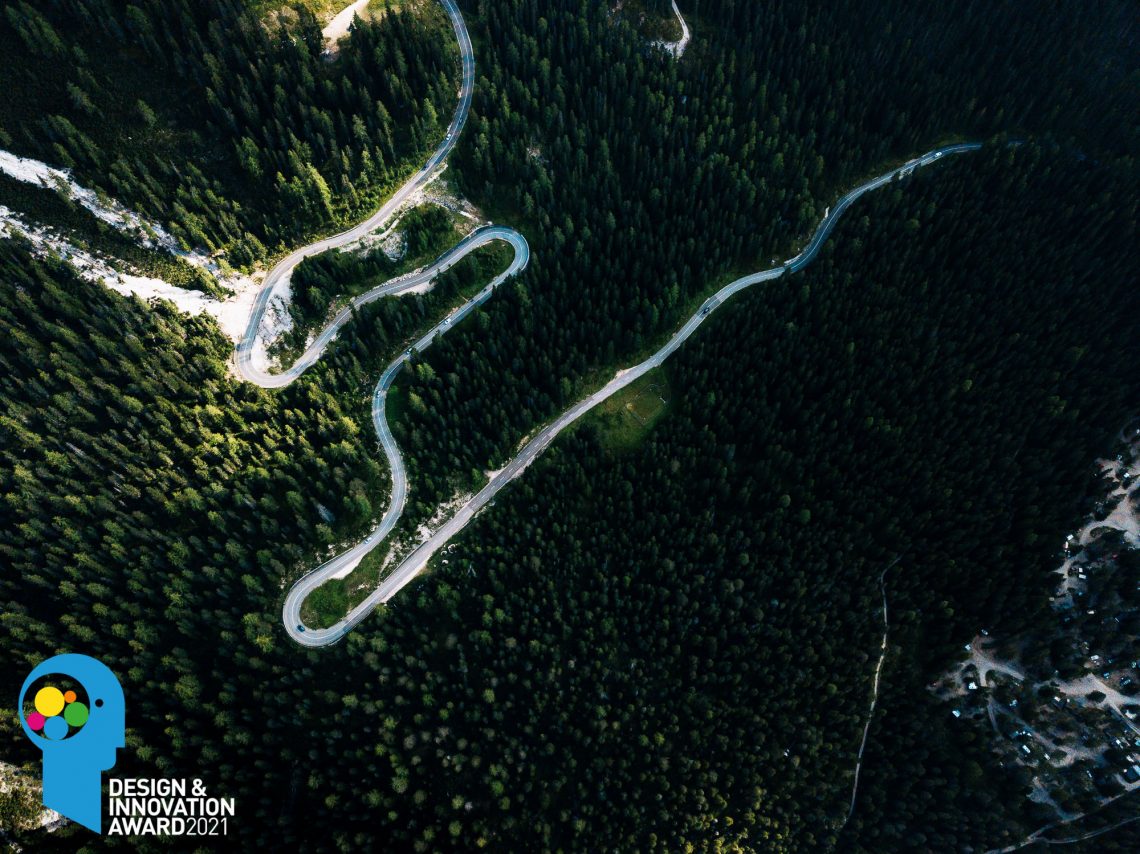The bike market has been booming in 2020 like never before. How does that influence the gravel bikes of 2021? What will we be riding and where can we spot the obvious trends for coming bike models? We’ve outlined the hottest gravel trends of 2021 and tell you where the challenges and opportunities lie for newbies and veterans. Are you ready?
In the context of the Design & Innovation Award 2021, the award jury, international experts and journalists took a thorough look at the trends and overarching technological developments of the new season. In this article, we take a closer look at the urban trends of 2021. You can read more about other trends at the end of this article.

Gravel is more than the name suggests – The one gravel bike has long disappeared
Gravel bikes are the current hype and right on-trend. But a gravel bike is much more than the name suggests. The market for gravel bikes offers everything that the heart could desire, from targeted and optimised custom solutions to multi-faceted all-rounders. So where will things go in 2021?
Gravel bikes as specialists
For a long time, bike manufacturers were satisfied with having just a single gravel bike in their portfolio. At the time, all models seemed to be all-rounders. While there were already significant differences in gravel interpretations between brands, since then, and particularly in the last few months, there have been quite a few developments. The market for gravel bikes is moving away from the “One bike for everything” approach and is turning into a finely segmented mass market. As a result, with everything from gravel bikes for easy mountain bike trails to time-trialling gravel machines, there’s no option that doesn’t exist. For gravel fans on the search for their perfect companion, that’s both a blessing and a curse. Apparently, it’s no longer enough just to want to ride a bike that’s happy to turn its hand to any adventure. Instead, you’re left with the feeling that you have to be defined as a gravel racer, leisure rider, adventurer or commuter. At the same time, specialised and optimised bikes offer significant advantages for riders who know exactly what they want. If one thing is clear, gravel stopped being just hype long ago and is big business!

Gravel bikes as generalists
In stark contrast to the advancing specialisation of gravel bikes, they continue to be a synonym for the lightheartedness that we nowadays all too often miss. They represent a lifestyle and attitude to riding that rejects barriers, prejudices and pseudo rules. The gravel bike is an escape vehicle which allows you to fulfil yourself and which works just as well on your 12 km local gravel loop as it does on an epic trail adventure in the Dolomites. Here too, technical progress stands bikes in good stead as new developments in components and updated geometries allow modern gravel bikes to cover a very wide range of applications either side of their speciality. Specialised generalists!

Gravel bikes as expedition-mobiles
The adaptability of gravel bikes is also reflected in current developments in the bikepacking sector. While for a long time, this was dominated by mountain bikes, now, more and more gravel bikes are used for both small and large adventures. Even here, the distinction between specific bikepacking-optimised gravel bikes and all-rounders that are suited to bikepacking isn’t clear-cut. If you want to find out more about the topic, you can find our big bikepacking bike group test in GRAN FONDO Cycling Magazine.

The two sides of the gravel bike boom
What’s likely the biggest trend of the new year already revealed itself in 2020: bikes are as hot as they’ve ever been as adventure, transport and sports machines. The boom is bringing new people onto bikes, is allowing others to rediscover their passion for biking and ultimately has led to bike shops in many places being empty. The bike boom will continue into the new year and together with delivery constraints for dealers and suppliers, partially interrupted supply chains and delayed development cycles, it will not only lead to poor availability of many products but also rising prices. Not just bike purchases but also maintenance, servicing or even warranty claims will require a significant dose of patience this year. However, the chances are good that as a result of all these challenges, the bike industry will reach a new level of professionalism and in the long run, we will benefit from significantly better service and servicing, as well as buying experiences more similar to those in the automobile sector. If you want to find out more about the background to current developments in the industry, challenges and opportunities, you can find all the information in our dedicated article in E-MOUNTAINBIKE Magazine.


The growing number of bikers gives our passion significantly more weight in society. Studies today have already shown that more people are currently cycling than playing football. That said, we can’t yet talk about a complete change in direction. Nonetheless, gravel bikes offer the perfect opportunity to escape congested roads and to exult in pure biking pleasure. There’s no doubt that gravel bikes are the perfect drop bar bike for 2021!
Size up
During the bike boom of 2020, alongside ebikes, gravel bikes have been one of the most enticing options for newcomers. The fact is that enthusiasm for an unfiltered experience of nature often clashes with limited experience of riding off-road. If you want to concentrate on nature rather than riding, you need a stable bike that communicates significant trust. These are requirements that manufacturers are already responding to and in future, will increasingly do so. Features, technology and geometries that are often inspired by mountain bikes make absolute sense for gravel.

A question of size – “State of the art” gravel geometry
When it comes to the frame size of your dream gravel bike and you sit on the boundary between two sizes, many ambitious riders would traditionally choose the smaller frame and compensate for the missing millimetres with a longer stem. For gravel racers and sporty riders this rule of thumb might continue to apply but for hobby, leisure and everyone who wants to ride their bike at the limit off-road too, it might be different. Particularly off-road is where for many, an additional dose of stability and security counts for a lot. More and more, manufacturers are relying on longer frames with more reach and a longer wheelbase. The increased length of the bike is compensated for with a shorter stem. Like mountain bikes, this approach makes for a better balance of stability and agility in rough terrain as well as providing a more upright and as a result more relaxed riding position.
With the literal growth of gravel bikes, it becomes ever clearer that they are the link between road bikes and mountain bikes and geometries continue to develop accordingly. To be continued in 2021!

In 2021 there will be large disc rotors on gravel bikes.
Look at the gravel bike market so far and you’ll find that many bikes have been specced with undersized disc rotors – that’s not just difficult to understand in terms of safety as the negligible weight savings result in significantly reduced braking performance. Whether for flatland gravellers who only occasionally do significant climbing or for alpine gravel fans, the larger the rotor the better the protection against overheating brakes on long descents. That doesn’t just benefit all-out braking power but also its control. An obvious increase in safety that overall has a limited effect on weight. Thankfully larger rotors are offered as standard for 2021 by more and more bike brands. A clear connection between modern geometries, the opportunities these open up and updates in components is easy to recognise. Upgrades that deliver even more fun are also increasing safety.

Gravel tires are getting wider
While for a long time gravel tires usually came in widths between 37 and 40 mm, the trend for 2021 is towards significantly wider tires. Currently, tires between 40 and 42 mm offer the widest range of compatibility and will fit most gravel bikes. However, modern gravel frames often provide clearances for tires up to 700 x 47C. The advantage? In simple terms, a higher-volume tire results in an increased level of comfort. At the same time, the larger contact patch improves grip and that means better traction at the limit. Wider tires also have the advantage that off-road and on loose terrain, they have lower rolling resistance. Thanks to modern tire technologies, manufacturers can make use of the advantages of wider tires while minimising their negatives. High rolling resistance on the road, high weight and vague handling increasingly belong to the past. Put in perspective, in all likelihood 700 x 45C will establish itself as the new “core” gravel tire size. If you haven’t yet tried it we can tell you that this much rubber is pretty great and makes for a lot of fun through corners and rough terrain!

Gravel goes mountain bike – Damped suspension on the gravel bike
The wheel of time continues to turn, eventually completing its revolution and starting all over again. That’s exactly where some parts of the gravel bike market find themselves now. Compare suspension fork- and dropper post-equipped gravel bikes with 90s mountain bikes and the conceptual approaches are almost impossible to distinguish. John Tomac rode the Yeti C-26, with drop bars, high-volume tires and 40 mm travel, from win to win in the World Cup. The versatility of modern interpretations of this concept surpasses these models by miles, but a superlight, full-suspension cross country bike is often not that far removed from the current most progressive gravel bikes. While this trend can be questioned, it does also show the technical possibilities available to manufacturers today. Are we moving towards the ultimate off-road bike that can win the XC World Cup and events like the Dirty Kanza alike? Who knows. The fact is that in 2021, we will see new additions with innovative suspension solutions and we’ll observe first hand how far gravel bikes can be pushed into mountain bike terrain.

Anti performance – Gravel bikes for antiheroes and adventurers
Even if gravel bikes are edging ever close to performance-oriented XC bikes, there are still some significant differences: namely the spirit. For years, the performance-focused drop bar market was all about marginal gains, watts, efficiency and unfair advantages. “Made to lose” is the slogan of the current gravel campaign of a well-known bike brand and is a symbol of the gravel spirit as an antihero with nothing to prove.
A majority of the gravel bike movement is on the search for freedom, digital detox and slowing down. The choice for all-rounder bikes that can do a bit of everything but nothing perfectly is a conscious one. A solid bike for exploration, experiences and sometimes even to be pushed rather than ridden. Nothing is necessary, everything is possible. With this kind of bike you can escape the everyday pressure to perform because, in contrast to classic road bikes or XC mountain bikes, nobody expects you to floor it on a gravel bike.
This might be abstract, but it’s one of the biggest trends of 2021 and simultaneously a counter-trend to an all too often stressful and hectic world.


E-gravel bikes are hotter than ever for 2021 – And open up the world of gravel bikes to many newcomers!
Having conquered the mountain, urban and trekking bike markets, electronically assisted bikes continue their campaign with drop bar bikes! With E-gravel bikes, your area of operation can be significantly expanded. Previously insurmountable climbs no longer pose a problem and bigger day tours suddenly shift into the realm of the achievable. Legally, an electric motor can provide support to a bike up to a speed of 25 km/h in Europe. That’s a perfect speed for gravel and off the beaten track, where the average speed is often a little lower anyway. Smaller, better integrated and more powerful motor systems will find their way onto new E-gravel bikes. Fasten your seatbelts!
2x drivetrains – The dead rise again
Questions about the number of gears are no longer the hot question for riders. The new reference is gear range. For years, 1x drivetrains without a front derailleur and just one chainring up front have conquered the gravel market. But now, it seems, a new revolution stands before us: 2x drivetrains could win once again, albeit with just one chainring up front and a 2-speed gear hub instead.

An appropriately specced 2×11 or 2×12 drivetrain expands where a bike can be ridden enormously. The smaller gear steps ensure optimal performance in less demanding terrain and modern clutch derailleurs prevent dropped and clattering chains when the going gets rough. Currently, 1x drivetrains are the first choice for all those who often ride in rough terrain and prefer intuitive shifting combined with clean looks. With the massive 10–52 t cassettes of many SRAM groupsets, they can also offer a range of up to 520%. Similarly, Shimano also offer a cassette with a massive 10–51 t range. Versatility with these cassettes is broad despite just having one chainring but the big drawback is that the jumps between gears are large. If you ride predominantly on compacted terrain or prefer small gear steps so that you’re always in the right gear, you’d be well served by a 2x drivetrain and from now on, you don’t even have to accept the compromise inherent to a front derailleur! It’s obsoleted by the new Classified hub – the innovative 2-speed gear hub takes over the duties of the chainrings and front derailleur and is even compatible with electronic Shimano groupsets. The best of both worlds and a technical solution that we’ll surely see specced on numerous bikes for 2021.
Find more 2021 trends in other fields of the bike-world here:
Mountainbike trends 2021 | Road bike trends 2021 | Urban trends 2021
Technology trends 2021 | Gravel trends 2021 | E-MTB trends 2021

Words: Benjamin Topf Photos: Valentin Rühl



